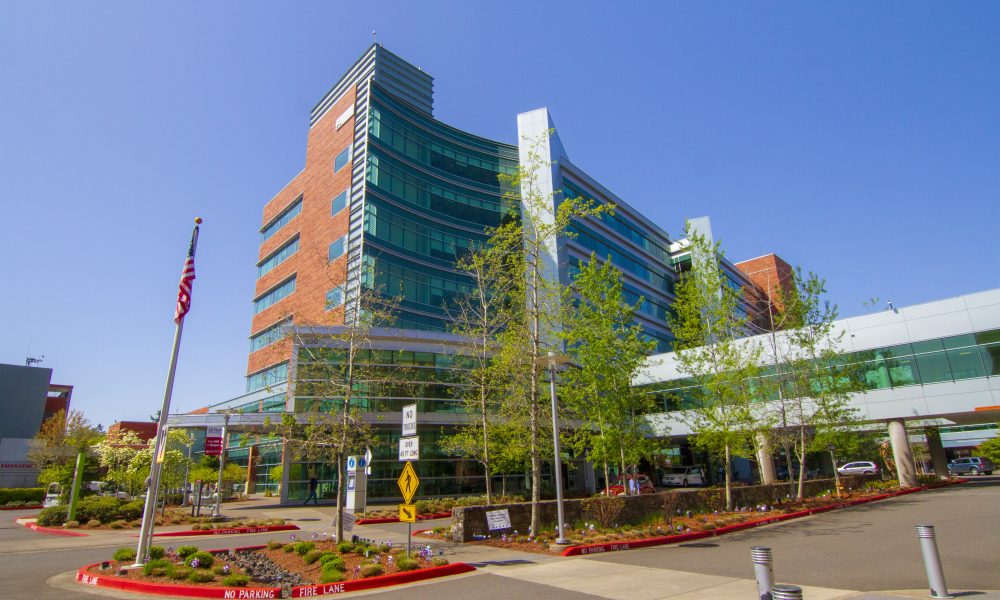
Salem’s only hospital would be out-of-network for thousands of residents if a contract dispute with Regence isn’t resolved. (Courtesy/Salem Health)
Thousands of Salem residents may be left with reduced insurance for local hospital visits if a contract dispute between Salem Hospital and a major insurer isn’t resolved.
The hospital has asked for a “double-digit price increase” for medical services next year that would be covered by Regence Blue Cross Blue Shield, the insurer said in a recent letter to its local customers.
The insurer had about 4,300 patients seek care at Salem Hospital last year, Regence spokesman Jared Ishkanian said.
Regence warned that if Salem Hospital is no longer part of the pre-approved Blue Cross providers, people insured through Regence would have to pay for care upfront, then seek reimbursement. They would, in many cases, pay substantially more for the same care, and be required to get care approved in advance or pay a penalty, the letter said.
Such changes wouldn’t affect emergency room care.
The two have been negotiating for months and hit an impasse that led to the notice from Regence. There is still time to spare patients the cost increases – the impact wouldn’t hit until next July.
Hospital leaders don’t dispute that they’re seeking to raise prices for Regence, but said the insurer has historically paid far less than other insurers.
“As we look out for the future and making sure Salem Health is a sustainable organization … we really need to move Regence to a point where they pay the same as what other commercial payers pay,” said James Parr, Salem Health chief financial officer.
Hospitals in Silverton, Albany, Corvallis, Stayton and other neighboring cities remain in the Regence network.
Hospitals set prices for procedures and care but typically negotiate discounted rates with insurers.
The prices charged to commercial insurers cover losses from providing care to Medicare and Medicaid patients. Government programs don’t cover the full cost of care but hospitals can’t do anything about those rates, Parr said.
About 70 percent of Salem Hospital patients were on Medicare or Medicaid last year, according to Oregon Hospital Guide, which publishes data from the Oregon Health Authority.
That data shows the median cost of procedures at Salem Hospital is typically close to the average for Oregon hospitals, though some procedures are more expensive.
In 2016, a knee replacement at Salem Hospital cost on average $30,824, versus $32,594 for all Oregon hospitals. A breast biopsy cost $3,128, slightly more than the state median of $3,068.
Those numbers include payments from Medicare and Medicaid, and Ishkanian said they’re not a good reflection of actual prices insurers pay.
Like most insurers, Regence uses research data to evaluate look at prices and quality of care based on commercial insurer contracts and payments.
“Our data shows that Salem Health is more expensive than other Oregon hospitals of similar size and quality,” Ishkanian said in an email.
Salem Hospital took in $1.6 billion in revenue caring for patients last year, with an operating profit of almost 16 percent, Oregon Hospital Guide data shows. It also provided $57 million in charity and uncompensated care.
The hospital is not-for-profit and relies on that profit to afford new equipment and expand buildings to accommodate a growing demand for care, Parr said.
The hospital has the busiest emergency room in the state, seeing about 109,000 patients last year. That’s possible because they added beds to accommodate growing demand, Parr said.
“When we make a profit it doesn’t get paid out to some kind of corporate investor,” he said.
Reporter Rachel Alexander: [email protected] or 503-575-1241.









